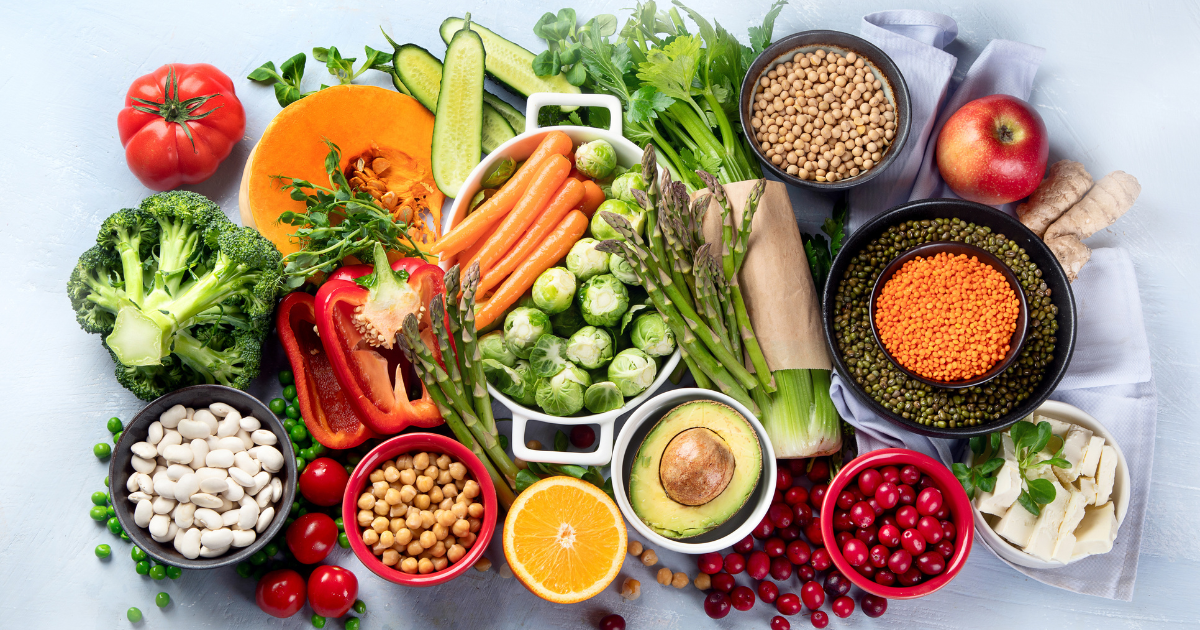- 866.222.0269
- Schedule a Tour

November is World Vegan Month.
A plant-based vegan diet can be very healthy, but special attention should be paid to the nutrients you’re getting from the foods you do eat to avoid common nutritional deficiencies linked to the lifestyle.
To be vegan, means to exclude all animal-based products including meat, dairy, and eggs. When followed correctly, it can be highly nutritious and even reduce the risk of chronic diseases. This is because the diet is typically rich in beans, legumes, fruits, and vegetables, and generally low in refined foods. However, people following a plant-based diet need to be more aware of certain nutrients that may be lacking including vitamin B12, vitamin D, omega-3 fatty acids, zinc, calcium, and iron.
If you or your family members follow a vegan diet, please be aware of your body’s additional needs and sources for the following essential nutrients:
- Vitamin B12
This vitamin is primarily found in animal sources making vegans a high-risk population for deficiency. However, there are a few plant-based sources including nutritional yeast and fortified foods, such as cereal, shitake mushrooms, and algae. Nutritional yeast has a rich cheesy and nutty flavor and can easily be sprinkled on salad or popcorn. You can also mix it into soups, mashed potatoes, or pasta dishes.
- Vitamin D
Animal products are the only natural sources of vitamin D other than the body making it from sun exposure. If you use sunscreen or live in a state where you don’t get daily sun, you’ll need to get vitamin D from fortified sources. - Omega-3 Fatty Acids
Three main types of omega-3 fatty acids contribute to heart and brain health: ALA, DHA, and EPA. Good sources of ALA include walnuts, flaxseeds (ground), chia seeds, edamame, canola oil, and soybean oil. Algae and seaweed are good sources of DHA & EPA. - Zinc
We need a regular supply of dietary zinc to stay healthy. In fact, scientists believe vegetarians and/or vegans need 50% more zinc in their diets because the absorption of plant-based foods is decreased. On the other hand, protein has been found to increase zinc absorption, so protein-rich plant foods are good choices. Zinc is found in the outer layer of grains so choose whole grains when possible, such as brown rice, quinoa, and whole wheat products. Additional sources of zinc include sunflower seeds, pumpkin seeds, cashews, sesame seeds, beans, peanuts, oats, chickpeas, lentils, mushrooms, walnuts, and tofu. - Calcium
For most Americans, dairy serves as a primary source of calcium—milk, yogurt, or cheese. Since these foods are excluded from a vegan diet, it’s important to include calcium-rich, plant-based foods like tofu, fortified dairy alternatives, green leafy vegetables, broccoli, fortified cereals and juices, and nuts—especially almonds, legumes, and cornmeal or corn tortillas. - Iron
Iron comes in two forms: heme (animal-based) and non-heme (plant-based) foods. Unfortunately, non-heme iron is not absorbed as well by our bodies. To aid in absorption when eating iron, pair it with a good source of vitamin C, such as fresh citrus fruits. In addition, calcium can hinder the absorption of iron so avoid pairing these together. Good sources of plant-based iron include nuts, beans, raisins, lentils, spinach, peas, and fortified cereals.
It is also worth noting that general nutrition information may NOT be tailored to people following a vegan diet. For example, since non-heme iron is not absorbed well, a person may need twice the recommended amount of plant-based iron.
Doctors often recommend supplements to people following a vegan diet. It’s a good idea to work with a knowledgeable healthcare provider to ensure you or your family members do not have any nutritional deficiencies while following the lifestyle of their choice.
Try one of our vegan recipes to boost your nutrients at home!
Pasta with Lentils & Spinach, Serves 4-6
Grab these things:
12 oz. lentils, rinsed & sorted
8-12 oz. whole grain penne noodles
1/2 lb. baby spinach, rinsed & dried
1/8 tsp. pepper
1/3 tsp. salt
1/3 cup olive oil
1 ½ cups onion, diced
1/4 cup basil, chopped
Let’s get cooking:
- Cook penne noodles according to package directions. Reserve 1 cup of liquid before draining.
- Put rinsed lentils into a pot and cover with fresh water, leaving about 6-inches of extra space. Bring to a boil, then lower heat and simmer for about 10 minutes.
- As the lentils are simmering, heat ½ of the oil in a large skillet over moderately high heat. Then sauté the onion with pepper and salt, stirring for one minute. Reduce heat to low and cook covered stirring occasionally until onions are soft and golden, about 10-20 minutes. Remove lid and increase heat to moderate, then cook, stirring frequently, until onion is golden brown, 5 to 10 minutes more.
- While onion cooks, coarsely chop spinach and add to onions along with lentils (including the lentil cooking liquid). Simmer, stirring one minute. Season with salt and pepper.
- Add pasta to lentil mixture along with the reserved liquid and cook over high heat, tossing for one minute. Season with salt and pepper and drizzle with remaining ½ cup olive oil. Top with fresh chopped basil before serving.
